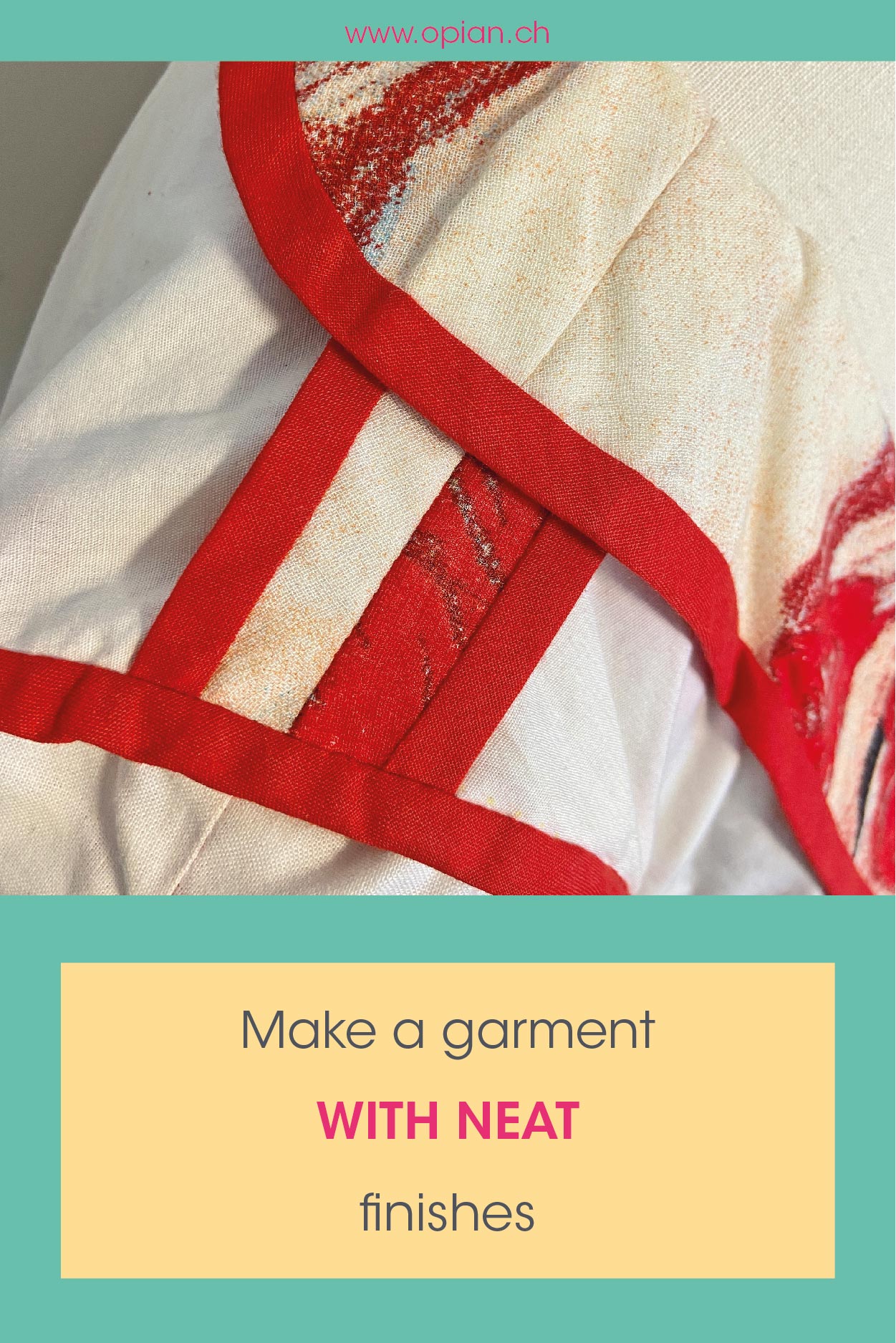Sewing tip | Make a garment with neat finishes |
Published :
12/12/2021 11:56:51
Categories :
Sewing Tips
Are you more of a perfectionist or are you more likely to the best is the enemy of the good? What makes you validate a seam and continue with the make?
Each person is free to sew the way they want according to their own criteria. In sewing, there are several ways of going about things to achieve a pretty and satisfying result. Today, I'll show you some tips to help you give a neat finish to your clothes that will help you save time in the long run.

Iron the fabric
It's basic, very basic! Without, it starts badly. Too often I see fabrics ready to be cut all wrinkled. Not only will the pieces be distorted, and in addition this can affect the fit. So, get your iron on!
Stabilise the bias parts
The parts cut on the bias stretch at high speed. Also, if you try on the garment while making it, there is a good chance that the piece will no longer be the correct size and yawns. Therefore, it is essential to stabilize them before handling the fabric.
There are several ways to do this. The first is to make a stitch with a longer stitch length than the usual one on the seam allowance. You can even leave the thread if it doesn’t bother.
Another option is to stabilise the piece with interfacing. It all depends on the size of the piece, but a collar, a belt or a facing should, in general, be fully fused. For a larger piece that doesn't need interfacing all over, you can use iron-on stabilizer tape at the seam.
The last method is to use an outstretched non-stick organza bias and hand-sew it at the seam.
Baste the seams
It may seem like a waste of time, but it can save you time actually. Some seams are more laborious to sew, so taking a little time to preassemble them by hand will give you a straight and precise finish. To do this, use a brittle thread of a different colour to the fabric so that it can be removed easily.
Keeping enough seam allowances
Sewing allowances are an essential element in achieving a perfect garment. Indeed, the narrower they are, the more they can be damaged. The risk of fraying is great in places with friction such as pockets and zippers. In addition, it will allow you to modify the garment more easily if needed. So, do not hesitate to leave a good centimetre and a half with an overcast at each seam allowance (with exception in the curves).
Use the correct presser foot
The right presser foot for the fabric or technique can change everything. Indeed, some feet will save you long minutes of wasted time for lack of precision or to unstitch the seam. Nothing is required, but I recommend the invisible zipper, buttonhole and walking presser feet.
Use the correct needle
How many times does the machine skip stitches because the needle is not made for lycra, the thread is pulled to one side, or the holes made by the needle are too big? The right needle will prevent you from tearing your hair and will easily prick into the fabric!
Without forgetting that you have to think about the type of fabric, but also the thinness of it. A 70 needle is suitable for muslin, and a 100 for heavy denim.
Check the symmetry of both sides before ironing
When making a collar, belt or other, you should check the symmetry of both sides before ironing. This will avoid marking the fabric if you need to redo the seam to even out.
Iron every seam
Just like ironing the fabric, pressing the seams properly between each step is extremely important. This allows you to put the next seam flat or in shape. We do not realise the importance of ironing in the seam, better too much than not enough.
Understitch the facings
The understitch is a seam made to sandwich the seam allowances with the facings so that it stays in place inside the garment. Once the main seam is done, you have to iron the seam open, then the two seam allowances against the facing, and finally understitch at 0.2cm from the first seam.


Opian
01/09/2022 16:18:31
Oui, si on essaie sans stabiliser ça peut être difficile de reprendre la forme.
deioel
01/03/2022 23:24:21
Stabiliser les parties en biais. Je ne savais pas que les tissus pouvaient se détendre autant. Merci pour les infos, ça va m'aider. Bonne année Opian